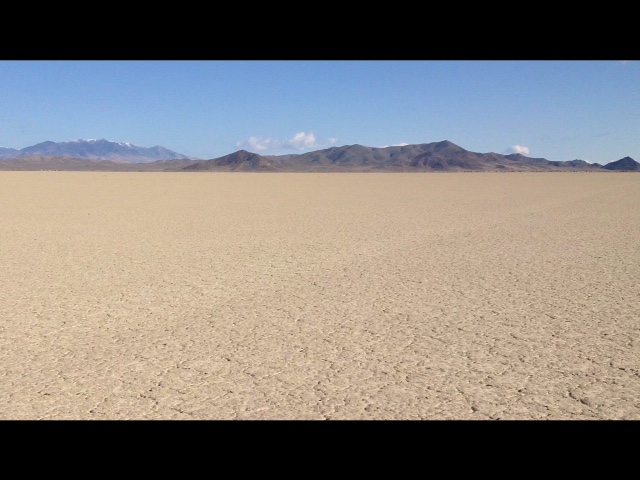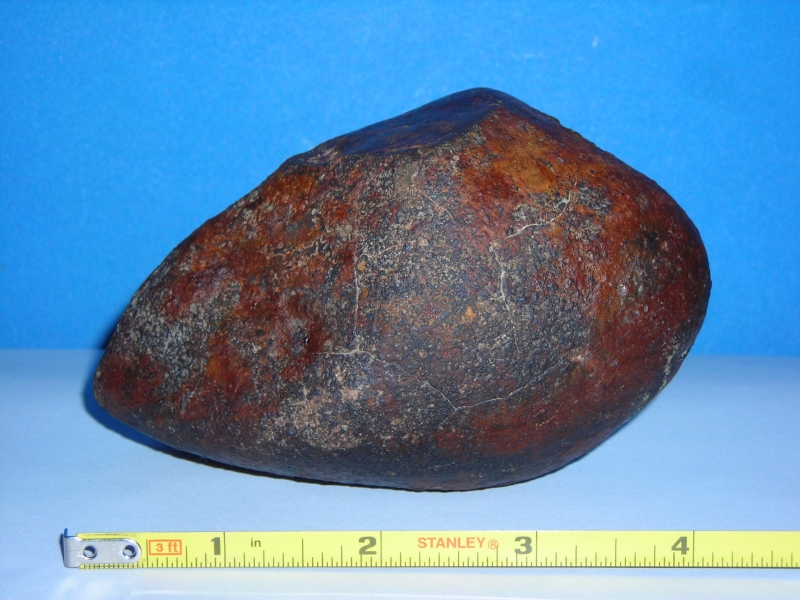-
Posts
1,182 -
Joined
-
Last visited
-
Days Won
34
Content Type
Forums
Detector Prospector Home
Detector Database
Downloads
Everything posted by Lunk
-
A few years ago I was detecting in the Franconia strewn field in Mohave County, Arizona. Out of the corner of my eye, I spotted a reddish orange rock that stood out in stark contrast from the surrounding light-colored soil. After careful excavation, I was holding the largest meteorite I've found to date.
-

Wild Plants And Nuggety' Areas - Geobotany
Lunk replied to idahogold's topic in Rocks, Minerals, Gems & Geology
The desert trumpet plant thrives in mineralized soils and is present in the goldfields that I frequent throughout Nevada and Arizona: https://www.google.com/amp/nuggeteer.com/gold-prospecting-and-metal-detecting-adventures/desert-trumpet-plant-eriogonum-inflatum/amp/?client=safari -
Wow. That's a huge space rock, Dave - congrats! Those others wouldn't happen to be Nininger meteorites in your photo, would they?
-
Great find, Fred! Those fine flow features are fantastic...looks like it was oriented. Thanks for sharing.
-
Another cold find from northern Nevada. I was detecting for gold nuggets with my GPX 5000 along a narrow wash that had lots of exposed bedrock. Upon hearing a moderate signal, I looked down and instantly recognized the small meteorite; you'll notice in the pic how it stands out from the surrounding soil and rocks. I'll never have this one classified because it's a complete individual; cutting it would ruin it.
-
There's not a lot of activity on the meteorite forum, so I thought I'd start a new thread to hopefully jump-start things. It's an invitation for forum members to post pics and/or stories of theirs or others meteorite finds. When I'm not hunting gold, I'm chasing meteorites. There's nothing quite like finding a rock that is literally out of this world. For meteorites that I have had classified, I've included links to their entries in the Meteoritical Society's catalog of officially recognized meteorites. They are cold finds; for those not familiar with the terminology, a cold find is newly discovered meteorite that is not part of any known fall or strewn field. So enjoy, and lets see some meteorites! https://www.lpi.usra.edu/meteor/metbull.php?sea=Diablo+Pass&sfor=names&ants=&falls=&valids=&stype=contains&lrec=50&map=ge&browse=&country=All&srt=name&categ=All&mblist=All&rect=&phot=&snew=0&pnt=Normal table&code=35516 https://www.lpi.usra.edu/meteor/metbull.php?sea=Quartzsite&sfor=names&ants=&falls=&valids=&stype=contains&lrec=50&map=ge&browse=&country=All&srt=name&categ=All&mblist=All&rect=&phot=&snew=0&pnt=Normal table&code=35634 https://www.lpi.usra.edu/meteor/metbull.php?sea=Imlay&sfor=names&ants=&falls=&valids=&stype=contains&lrec=50&map=ge&browse=&country=All&srt=name&categ=All&mblist=All&rect=&phot=&snew=0&pnt=Normal table&code=52855 I'll have more to share later...
-
Nice!
-
Thy coffers overfloweth! GOY
-

Late Afternoon Comparision Of GPZ And GPX
Lunk replied to Nevada Brian's topic in Minelab Metal Detectors
Brian, A quote from JP in another topic regarding the GPZ seems to be applicable here: "Difficult and Normal: Difficult removes ground signal but also the null points of the modes (High Yield, General and Xtra Deep) are different to each other across the Ground Type modes (Difficult compared to Normal). For instance a 1/2 ounce solid nugget will give a better response in General Difficult than in General Normal, this is not due to ground signal but more to do with the modes sensitivity points. Some nuggets will fall into a modes least sensitive position that's why it pays to go over ground with a variety of modes." -

Late Afternoon Comparision Of GPZ And GPX
Lunk replied to Nevada Brian's topic in Minelab Metal Detectors
Awesome Steve - sounds like a new project for you to work on! Just wondering if you can stuff it all into a light-weight housing...you'll have a winner. ? -

Finally - The QED Arrives?
Lunk replied to Steve Herschbach's topic in Metal Detector Advice & Comparisons
I cranked the volume when watching the video, and there is a very faint threshold; the audio quality of the video is poor, and I believe the microphone used to record it didn't have a very wide dynamic range. So it registered louder sounds like the bird and the target responses while muting the quieter sounds like the threshold and some of the conversation, and could have caused the clipping effect as well. -

Finally - The QED Arrives?
Lunk replied to Steve Herschbach's topic in Metal Detector Advice & Comparisons
The first thing I noticed when listening to the audio is that the threshold level seems to be set too low, which clips the target response; a faint target below the clipping point will not be audible. Also, notice how the target response is inverted. Instead of the traditional high-low tonal response to a small nugget. the QED produces a low-high response. -

19" Zed Finds A Meteorite And A Little Nugget
Lunk replied to mn90403's topic in Metal Detecting For Meteorites
Good job! -
Great ideas, Steve. If there is enough interest, I would like to see a dedicated meteorite forum as well.
-
It does seem strange at first glance until you think about it; since increasing the Volume Limit has no effect on faint targets, it just makes sense to turn in down just low enough to where a strong target response is actually comfortable to listen to. It makes detecting in trashy areas almost pleasant. ?
-
Andy, Steve is right; the Volume Limit merely sets the maximum volume that a target can make, and so has no effect on boosting a faint target response. To do that, you need to increase the Volume setting, which controls the internal amplifier. Until you find the right combination of audio settings that work best for you, feel free to give mine a try here:
-

Large Powerful Magnet For School Project
Lunk replied to Kabaka's topic in Detector Prospector Forum
https://www.kjmagnetics.com/ Magnet heaven? -
I'm no photographer by any means, and the only technique I use is aiming my iPhone. That being said, one of my better close-ups is this one of a 28 gram Arizona nugget that I had just unearthed and given a quick water bath.
-

Huge Gold Nugget Found And Lost By An Idiot!
Lunk replied to Gold Seeker's topic in Detector Prospector Forum
I'm with Bluthermal; looks like an April Fool's stunt. -
Indeed, Red Dirt Digger; northern Nevada is known for crystallized gold nuggets, referred to locally as chevron gold.
-
Another Zedhead joins the ranks - WTG Squizz!
-
With the winter months upon us, it's time once again for fun in the desert sun.? I spent a few days in northern Nevada en route to the big Q and managed to collect a half an ounce of golden goodies from old nugget patches with the trusty Zed. Where the damp alkali soil became too noisy for High Yield / Normal, selecting Extra Deep / Normal did the trick. At other locations, iron mineralization was the culprit and the High Yield / Difficult combo was the answer.
-
Thanks for the advice JP, and well done on those fantastic gold finds...that's quite a massive dig hole that you're sitting on in your second post. Looking forward to more tidbits about the GPZ 19 coil from you.



